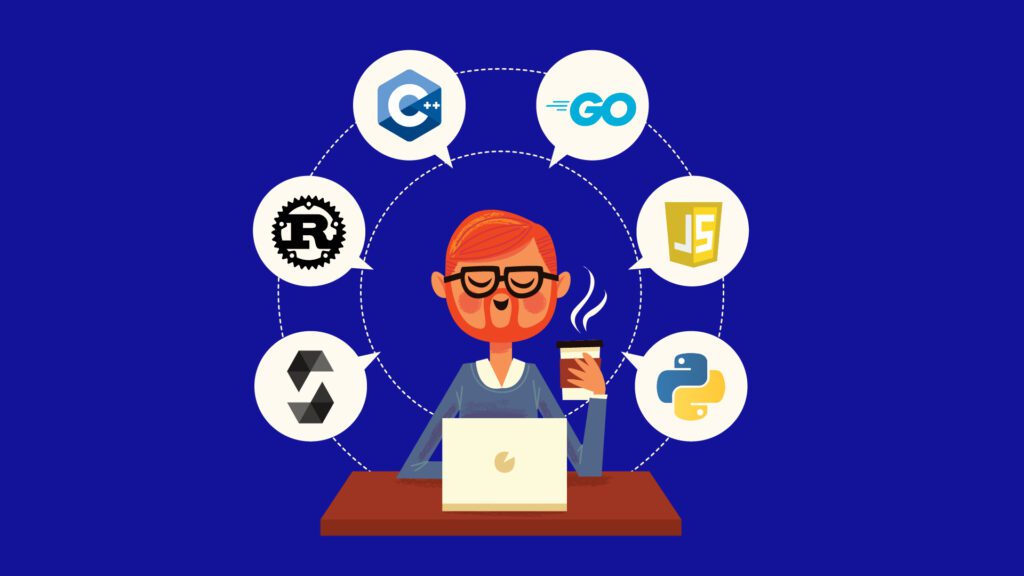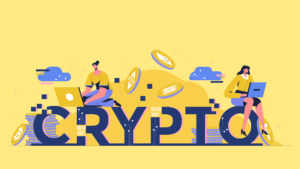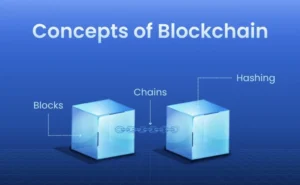
By the year 2025, blockchain programming is going to get more competitive, and qualified developers will be significantly in demand. There are many advantages offered by every programming language, which, depending on them, may make your application successful-go from secure smart contracts to scalable, high-performance networks. So, here we’ll look at the major programming languages by which blockchain developers will work in 2025, along with their advantages, applications, and reasons why they are going to be the go-to resources for anyone who wants to succeed in this highly dynamic blockchain industry.
The Role of Programming Languages in Blockchain
Developing a blockchain is not much like building an average web or mobile application. Security, speed, and reliability are essential because it is decentralised and manages assets that might be valued at millions of dollars. Your bad choice of programming language can stand in the way of your development: delays, unknown glitches, or difficulties stretching your project as it develops. On the other hand, working with the right one offers performance, creates a good community, and brings useful resources-aiding long-time success. Many businesses choose to hire software developers in India to gain access to skilled professionals who understand the nuances of blockchain technology and can work with the best-suited languages for secure, scalable systems. As 2025 approaches, the big question for developers is simple: what programming language should I learn to remain competitive and build powerful blockchain solutions?
Top Programming Languages for Blockchain Developers
Solidity
It is certain that Solidity will remain the smart contract development language of choice for Ethereum and other EVM chains (like Polygon, Binance Smart Chain and Avalanche) for Blockchain Developers into 2025. Crafted by the blockchains themselves, it is now easier to make contracts that are safe, efficient and reliable. While Solidity has a robust ecosystem development support that fast-tracks developments through Hardhat and Truffle as Frameworks, it also has an expansive network of developers with a countless number of tutorials. Thus, Solidity is a great choice for anyone looking to get into the development of smart contracts and decentralized applications as it is being used in real-world projects like Uniswap, Aave, and almost all NFT marketplaces.
Rust
Due to its focus on memory safety, speed, and predictability, Rust has emerged as one of the most popular programming languages for blockchain development. It has become the default programming language for many high-performance blockchains because it eliminates the possibility of common mistakes and provides efficiency at scale. Rust builds Solana, which is famous for its extremely fast transactions, and even transactions of projects like Polkadot and Near Protocol use Rust in their infrastructure. Developers love Rust’s strict compiler because it can find bugs before they become catastrophic issues, making it a great language to build a blockchain system that is safe and scalable. In 2025, Rust emerged as the preferred language of developers building new and high-performance blockchain systems.
Go (Golang)
There is another language called Go; also known as Golang. Go is gaining more ground on blockchain dev for its ease, concurrency and scalability. Go was designed for Google and is used to build blockchain systems more than just applications. Go is the language used in Hyperledger Fabric, which is one of the largest enterprise blockchains, and the Cosmos SDK, which is used for leading blockchains such as Terra and Osmosis. It works well for developers because it is fast, easy to learn, and has a strong standard library for developers. In 2025, Go is a good fit for enterprise-grade and infrastructure-related blockchain implementation projects.
Python
While Python may not be the fastest language around, its simplicity and flexibility are a huge advantage making it one of the most accessible tools for blockchain development. With Fast Coding, a very clean syntax, and a pretty much endless list of libraries available to help developers accomplish their task, Python is only limited by what blockchain developers want to do with it. Python is also great due to its simplicity for quick prototyping or testing smart contracts or for blockchain analytics use cases. A good example of this is the Brownie framework for Ethereum Contracts is built in python and a lot of blockchain analytics and data scientists use Python as a language to analyze blockchain data. For beginner developers that start in 2025 and want to develop blockchain applications Python is a gentle learning curve without compromising its utility, and for more advanced developers, its rapid ability to integrate blockchain with AI, Cryptography, or Data Analysis.
JavaScript/TypeScript
The Web3 space is predominantly occupied by JavaScript and TypeScript as nearly all decentralized applications require seamless bridges between the blockchain backends and user interfaces. JavaScript libraries such as Web3.js and Ethers.js enable interaction with Ethereum and other blockchains which is enhanced with TypeScript’s provided type safety. The integration with JavaScript or TypeScript is employed by nearly all NFT marketplaces, DeFi dashboards, and wallet integrations including MetaMask to create a seamless user experience with blockchain applications. Those who are interested in the front-end or full-stack of the blockchain ecosystem will continue to need expertise in JavaScript or TypeScript in 2025.
C++
Although C++ is not a trending language, it is indispensable for blockchain systems because of its high-performance and low-level control. C++ is known for effectively managing memory and system resources and is the primary development language for the original blockchain protocol – Bitcoin Core; further, major contributors to the Bitcoin protocol still utilize C++ for performance-intensive infrastructure components. Likewise, it is also now common for developers to utilize C++ for blockchain systems if they are wishing to establish a foundational understanding of how blockchains operate or are looking for performance and maximum throughput for infrastructure components where scalability is a consideration. In short, in 2025, C++ is still a sound option for blockchain infrastructure.
Choosing Your Path in Blockchain Development
What do you think is the top programming language for blockchain programmers in 2025? The truth is, there is no one single winner. It is totally situational based on what you want to do. If you are trying to build smart contracts or dApps, then you should focus on learning Solidity and JavaScript/TypeScript. Conversely, if you want to build the highest performance, next-gen blockchains, there will still never be a better option than Rust, Go, and C++ to provide the fastest route to reliability. Finally, if you are new to this space or wish to play with some blockchain ideas without segregating yourself from other relevant or useful programming languages, then there are no barriers in the way of starting with programming languages in Python, which will still allow you to trespass into blockchain.
Ultimately, you just have to remember to leverage your programming language in conjunction with your project goal. The blockchain ecosystem moves quite quickly and to have a great advantage in the ecosystem in terms of speed, programmers in the blockchain ecosystem are more specialized to each of these programming languages. If you want to launch the next great DeFi solution or develop enterprise scale Blockchain Development Solutions or learn how to use Web3, the first step of the programming language will help you to make that happen.






